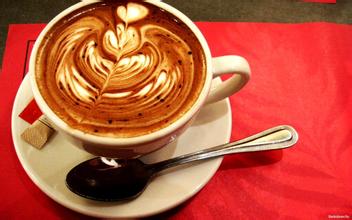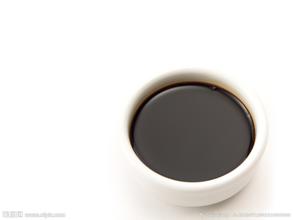Seven factors of Flavor and aroma of Coffee Raw beans
Different producing areas will have different temperature, rainfall, sunshine, humidity and soil composition. So even the same variety of coffee will be cultivated in different environments with different flavors and aromas.
For example, the rose summer in Ethiopia is different from that in Panama, because coffee trees produce fruits with different flavors depending on the growth environment.
Generally speaking, African beans taste bright and cheerful, and the flavor in the mouth is changeable and lively; Central and South American beans are enthusiastic and unrestrained, with only a mouthful of all the flavors coming; Asian beans are relatively conservative and need to be extracted at high temperature for a long time. Figure it out slowly. I have to say, beans are like people.
Second, different varieties
Different places of production, even different estates, the varieties of coffee will be different, so the cultivated varieties of coffee are also very diverse, of course, the taste and aroma of coffee are also varied. There are thousands of coffee tree species all over the world, and the more common species are as follows:
Typica: excellent aroma and mild sour taste
Bourbon species (Bourbon): mellow thickness, strong aroma, sweet taste is very bright.
Kaddura species (Caturra): refreshing sour fruit, light sweet taste.
Catimor: bitter, dark chocolate aroma.
Canefra (Canefora): it can also be called Robusta. It has a single flavor and a mugi-cha flavor.
Third, different treatment methods
Coffee berries are processed after picking. Typical treatment methods are as follows:
Sun treatment (Natural)
Washing method (Washed)
Semi-washing method (Semi-washed)
Natural pectin removal (Pulped Natural)
-Red honey (Red Honey)
-Yellow honey (Yellow Honey)
-Black honey (Black Honey)
Sweetness-alcohol thickness: sun > natural removal of pectin > semi-washing > washing.
Acidity & aroma: washing > semi-washing > natural removal of pectin > solarization
Solarization is the oldest treatment method, which is not only time-consuming, but also easy to produce defective beans. The water washing method is to make up for the defects of the sun method and was born. The washing method saves time, reduces the occurrence rate of defective beans, and then controls the quality of coffee. However, the flavor and alcohol thickness of coffee processed by washing method are not as good as those processed by tanning method. As a result, people invented the honey treatment, that is, the natural removal of pectin, that is, the peel was removed and the pulp was preserved for drying.
Fourth, planting at different elevations
For people who grow fine coffee, in order to be similar to the acidity of fruit and have deep dry aroma of coffee, it is found that the area suitable for growing fine coffee is the plateau with an altitude of 1500 meters to 2000 meters above sea level. Because there is a large temperature difference between day and night, the amount of oxygen absorbed by plants increases and the coffee fruit shrinks more frequently. But there are exceptions to this fact. In the Kona region of Hawaii, coffee beans are grown at an altitude of about 700 to 1,100 meters, because Hawaii has a unique island climate, excellent sun conditions, and usually modern facilities. Farmers are very rich, so they all have feelings and integrity.
High altitude:
Over 1400 m-SHB (Strictly Hard Bean) / SHG (Strictly High Grown)
1200 ~ 1400m-HB (Hard Bean) / HG (High Grown)
Mid-altitude area:
600m-900m-PW (Prime Washed)
Low altitude areas:
Below 600m-GW (Good Washed)
Fifth, regional coffee grade standards are different
Coffee grades from different places also have different classification criteria. Basically, there are four criteria for scoring raw coffee beans:
1. Planting altitude
2. Size of raw beans (sieve size Screen size)
3. Coffee bean flavor
4. Proportion of defective beans
But different countries have different benchmarks. In Brazil, for example, the criteria for taste are as follows (from high price to low price):
Strictly Soft > Soft > Softish > Hard > Hardish > Rioy > Rio
There are about four kinds of defective beans in coffee:
Over-fermented beans: spicy, astringent, sour and bitter.
Black beans: smelly and bitter.
Worm-eaten beans: smelly feet, rotting corpses.
Moldy beans: mildew, rot, bitterness.
6. The new and old degrees of raw beans are different
With the same kinds of beans, manors, elevations and planting methods, there is a great difference between new raw beans and old beans in dry and wet fragrance. Because coffee is also a kind of crop, freshness is very important for coffee.
Changes in freshness of raw beans:
New season beans > overdue season beans > old beans > old beans
New season beans: raw beans harvested within one year
Over-yielding seasonal beans: more than one year.
Lao Dou: more than two years
Aged beans: ripe raw beans.
In terms of water content, the processed raw beans contain about 11-13% moisture. The longer the storage time is, the moisture will be gradually lost. For example, after a year at room temperature, the water content of raw beans will drop to less than 10%. The color of raw beans just processed is blue-green / green, but as time goes on, the color of raw beans will gradually become light green, white or yellow. And with the extension of raw frying, the aroma of raw beans will change from grass and spice to hay or rice, and for a longer time, it will be completely tasteless.
7. With different preservation methods, the flavor and aroma will be maintained for different times.
No matter how good the quality of raw beans is, they will vary according to different preservation methods and facilities. The ideal thing is to maintain an indoor temperature of 15,18 degrees Celsius and an indoor humidity of 50% and 60%. The wrong way of preservation will affect the flavor and aroma of beans, and even deteriorate. It often causes raw beans to fade and whiten and become wet and soft.
White or yellow raw beans: because the temperature of the storage place is too high, or too dry, the moisture of the raw beans will be absorbed by the air.
Raw beans with moist surface: the humidity in the storage place is too high, during the rainy season. If the condition is serious, mold will appear on the surface of the beans.

Important Notice :
前街咖啡 FrontStreet Coffee has moved to new addredd:
FrontStreet Coffee Address: 315,Donghua East Road,GuangZhou
Tel:020 38364473
- Prev

Life Journey of Coffee Tree
Coffee, as a perennial evergreen shrub or small tree of Rubiaceae, is a horticultural perennial cash crop. The life of a coffee tree is generally divided into these stages: (1) the seedling stage is the period from the germination of seeds (or cuttings or grafting) to the emergence of seedlings (the stage of raising seedlings in the nursery), about 0.5-1.5 years. After the coffee seed is sown, after a period of time
- Next

Before the coffee flower-all kinds of knowledge that must be understood
According to the idea of coffee flavor wheel to make, starting from the central point to explain in detail the impact of each point on flower drawing and different, no more gossip, let's go straight to the topic. We can see from the picture that I divide the factors affecting flower drawing into four categories: coffee, milk, cup and pattern. Let's start with coffee. Coffee means espresso. Let's talk about extraction first.
Related
- Beginners will see the "Coffee pull flower" guide!
- What is the difference between ice blog purified milk and ordinary milk coffee?
- Why is the Philippines the largest producer of crops in Liberia?
- For coffee extraction, should the fine powder be retained?
- How does extracted espresso fill pressed powder? How much strength does it take to press the powder?
- How to make jasmine cold extract coffee? Is the jasmine + latte good?
- Will this little toy really make the coffee taste better? How does Lily Drip affect coffee extraction?
- Will the action of slapping the filter cup also affect coffee extraction?
- What's the difference between powder-to-water ratio and powder-to-liquid ratio?
- What is the Ethiopian local species? What does it have to do with Heirloom native species?

